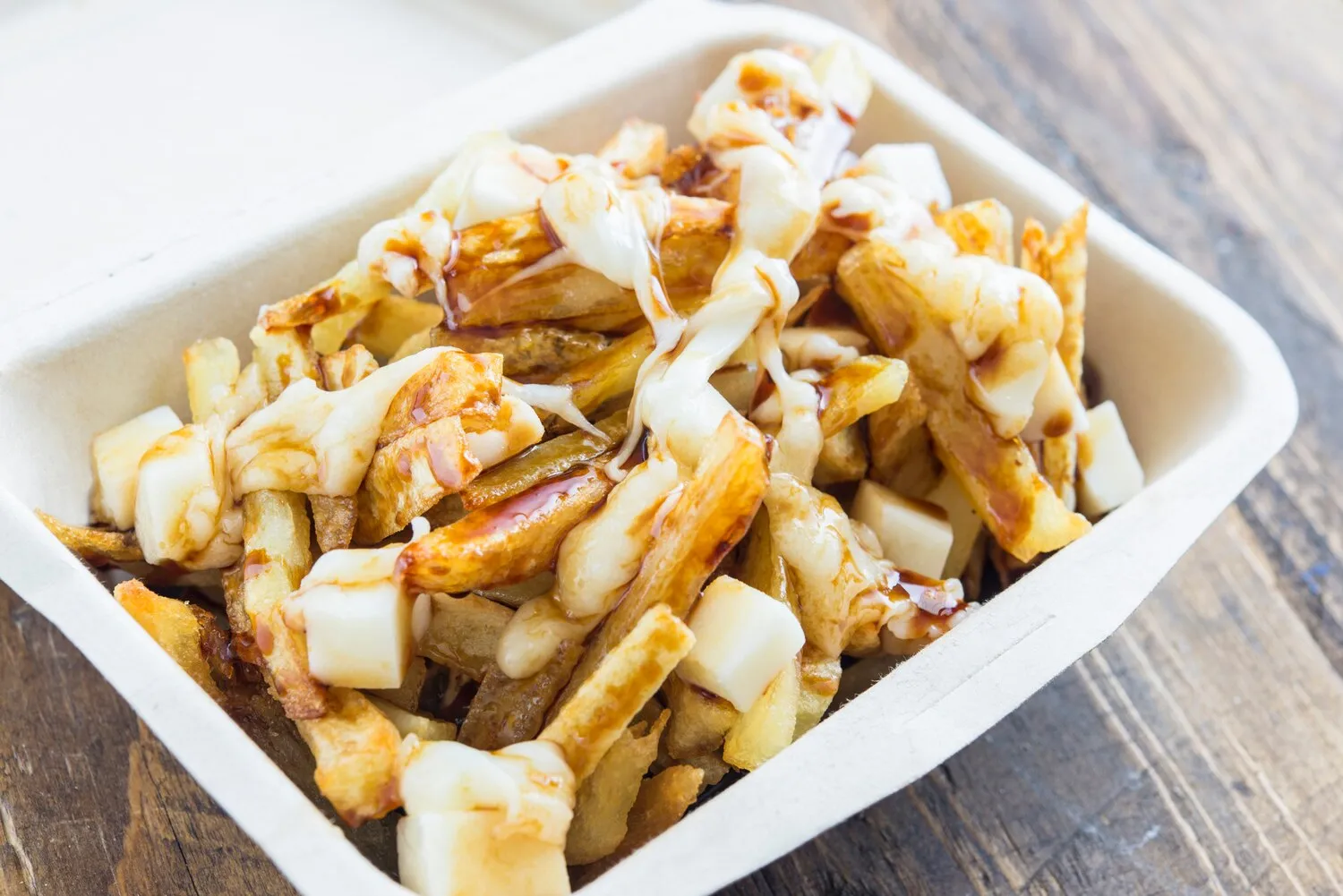
Poutine Braisée
Fries, cheese curds, braised beef, gravy.
Nutrition Facts
* The % Daily Value (DV) tells you how much a nutrient in a serving of food contributes to a daily diet. 2,000 calories a day is used for general nutrition advice.
Poutine originated in rural Quebec in the late 1950s. While the exact origin is debated, it's generally accepted that it started as a simple combination of fries and cheese curds, initially considered a messy and unrefined dish. The addition of gravy came later, solidifying its identity. Braised meats, like beef, are a modern gourmet addition, building upon the traditional foundations.
Poutine has become a national dish of Canada, representing comfort, indulgence, and a sense of cultural pride. Its evolution from a humble snack to a gourmet dish reflects Canada's culinary innovation and its embrace of diverse flavors.
Regional Variations
While the classic poutine remains popular, numerous regional variations exist across Canada. Different provinces may use different types of cheese curds or gravies, reflecting local culinary preferences. Poutine Braisée represents a modern, often urban, refinement of the traditional dish.
Symbol of Quebecois Identity
Poutine is particularly significant in Quebec, where it originated. It is seen as a symbol of Quebecois culture and identity, representing the province's unique culinary heritage.
Festival Staple
Poutine is a common sight at festivals and fairs across Canada. Food vendors often offer a wide variety of poutine options, showcasing creative toppings and flavor combinations, including variations like Poutine Braisée.
Poutine Braisée is a symphony of savory, rich, and comforting flavors. The combination of salty fries, tangy cheese curds, unctuous braised beef, and savory gravy creates a complex and deeply satisfying experience.
The key flavors are the salty, slightly starchy taste of the fries, the squeaky, milky tang of the cheese curds, and the deeply savory, melt-in-your-mouth flavor of the braised beef. The gravy ties everything together, adding a rich, umami depth and moistening the components. The gravy itself often has hints of beef broth, herbs, and spices, complementing the braised beef perfectly. The braising process for the beef imparts a tender texture and concentrated flavor.
Fries
Use thick-cut fries that are crispy on the outside and fluffy on the inside. Double-frying can help achieve the perfect texture. Season them well with salt immediately after frying.
Cheese Curds
Use fresh cheese curds that are still squeaky. They should be at room temperature, not cold, to ensure they melt slightly when the hot gravy is added.
Braised Beef
Choose a cut of beef that is well-suited for braising, such as chuck roast or short ribs. Braise the beef slowly at a low temperature until it is incredibly tender and falls apart easily. Don't skip the searing step to develop a rich, deep flavor.
Gravy
Make a rich and flavorful gravy using beef broth, roux, and seasonings. Thicken the gravy to a consistency that coats the fries and cheese curds without being too thick or watery. Add some of the braising liquid to the gravy for an extra layer of flavor.
Explore additional Poutine dishes and restaurants
Explore PoutineDiscover top dining spots and culinary experiences in Québec.
Explore QuébecLearn more about the food culture, restaurant scene, and culinary heritage of Canada.
Explore Canada